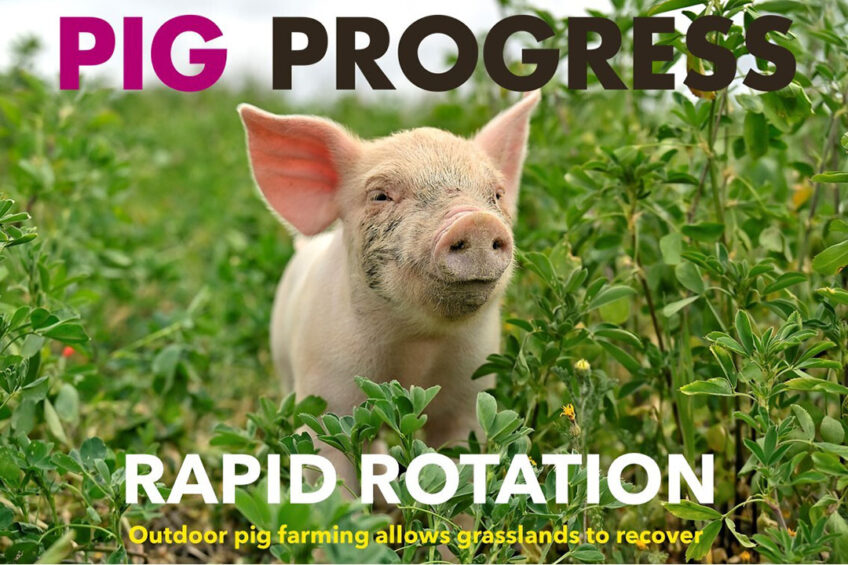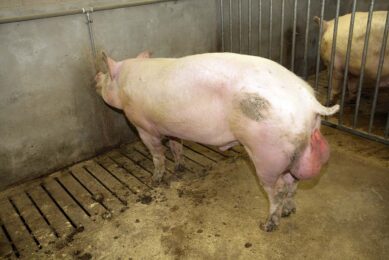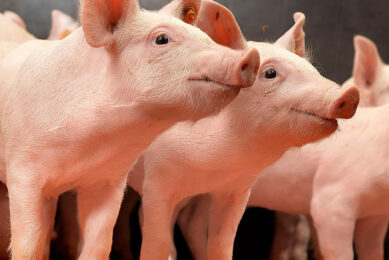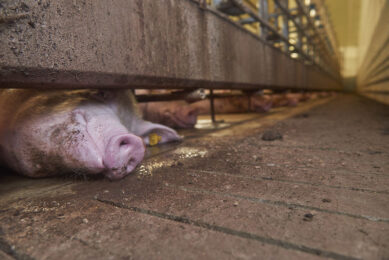Rotation, ractopamine and retrofitting in Pig Progress 4

The 4th edition of Pig Progress for 2021 is now available online. This edition takes an inside look at an organic outdoor pig farm in Spain that has opted rapid field rotation, as well as a consideration of what is believed to be the best-known feed additive in the world, and some ideas to ponder when switching to group housing for gestating sows if a retrofit is desired.
View Pig Progress digital magazine
ESPHM: How feeding affects swine health
Pig health was highlighted during the digital European Symposium of Porcine Health Management in April, as detailed on pages 6-7. In addition to presentations on live vaccines and the use of drugs, the outcomes of a study into controlled fermentation were presented, as well as the combination of precision agriculture and big data analysis as the way ahead.
No reason to worry about new PCV2 genotypes
As reported on pages 8-9 by Oliver Duran of Boehringer Ingelheim, the Porcine Circovirus (PCV) has a high mutation rate and is continuously evolving, although the genetic changes do not seem to alter the structure of the capsid protein enough to evade protection from PCV2-a based vaccines.

Retrofitting a sow barn – 8 ideas to consider
With rising pressure to enhance animal welfare, an increasing number of sow farms outside of Europe are switching to group housing for gestating sows. If a retrofit is under consideration, it may be useful to take a look at some strategies highlighted on pages 11-12 by Sylvain Blouin of Jyga Technologie, including sow inventory, flooring and feeding systems, all of which should be analysed.

Making any pig decision data-driven
Israeli tech company, FarmSee, was founded in 2018. Its camera-based weighing sensor offers pig producers valuable, real-time data on each individual pig. An article by correspondent Philippe Caldier deals with how it works on pages 14-15.

7 ways to lower feed costs
This column by Dr Francesc Molist of Schothorst Feed Research on page 17 offers food for thought on feed, specifically when it relates to cost. Pork producers have a few options…
Organic pig farming with rapid field rotation
This edition’s cover story is on organic outdoor production which is taking off at a pig farm in northern Spain. Owner Eduard Cau Barrufet has opted for rapid field rotation. Pig Progress editor Vincent ter Beek reached out to him at a time when, for the first time, weaning is going to happen at the farm’s new organic pig site. Here, about 300 6-week-old weaners will be moved (at 4am) away from the huts in the field to mobile weaner houses. Read more on pages 18-21.

New insights to control PRRS virus
The Porcine Reproductive and Respiratory Syndrome (PRRS) has a big impact on the industry, but also of concern is the susceptibility of PRRSv-infected pigs to secondary bacterial or viral infections. The article on pages 22-23, authored by Olga Dansen of Framelco, looks at an immunomodulation strategy that could help control PRRS.

Sulphur and sulphate in diets: is it a concern?
Sulphur-containing compounds are essential for pigs, but an excess of sulphur sources in a pig’s diet could negatively affect not only gut health and effluent composition, but also soil, water and air. Read more in an article by Alessandra Monteiro, Arturo Piñon and Pascal Peu on pages 24-25.

3 key trace minerals for sow productivity
Modern-day hyperprolific sows in commercial conditions require accurate nutrition, and fortunately there has been much research done globally on this subject. The role of 3 trace minerals – zinc, copper and manganese – have been highlighted. The relevant details on these significant trace minerals can be read in a contribution of René Bonekamp of Novus on pages 26-27.

Probably the best-known feed additive in the world
Although the use of the feed additive, ractopamine hydrochloride (RAC), is banned in many countries, Dr Thompson of the Michigan State University notes that its use in pig production can safely and reliably improve average daily gain and feed efficiency by 10-12% and can offer a US$ 9 return on a US$ 3 investment in less than a month. The article by correspondent Treena Hein deals with this on pages 28-30.

Column: The fight against viruses
On page 34, interdisciplinary researcher focusing on pig behaviour, welfare and production, Dr Irene Camerlink, cleverly encourages us to think about ‘humans’ and ‘governments’ instead of ‘pigs’ and ‘farmers’ in light of the Covid-19 pandemic. There are lessons to be learnt in both directions, she says.











